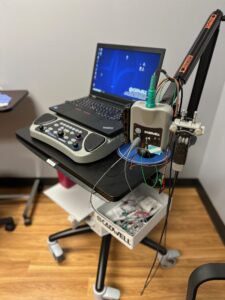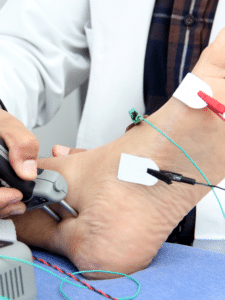The Transformative Role of Botox® in Managing Spasticity
Are you or a loved one facing the challenges of spasticity? You’re not alone. Spasticity, characterized by muscle stiffness and involuntary contractions, can significantly impact daily life and overall well-being. But there’s hope – Botox®, renowned for its cosmetic uses, has emerged as a game-changer in spasticity management. In this article, we’ll explore the science behind this treatment, its benefits, and what you can expect. Let’s shed light on the role of Botox® in managing spasticity.
Understanding Spasticity and Its Impact
Spasticity occurs when muscle tone increases abnormally, leading to stiffness and involuntary contractions. Conditions like cerebral palsy, multiple sclerosis, traumatic brain injury (TBI) and stroke are commonly associated with spasticity. This condition can range from mild muscle tightness to severe spasms, making daily tasks challenging and affecting mobility and overall quality of life.
Living with spasticity can be physically and emotionally draining, hindering simple actions like getting dressed or walking. Stiffness and muscle tightness not only make movement difficult but also contribute to pain and discomfort. Moreover, spasticity can lead to social isolation and frustration as individuals struggle to engage in activities they once enjoyed.
Managing Spasticity with Botox®
Botox®, or Botulinum toxin, commonly known for its cosmetic applications, is FDA-approved for adult upper limb and lower limb spasticity treatment. When injected into affected muscles, Botox® temporarily weakens them by blocking the release of acetylcholine, a neurotransmitter responsible for muscle contractions. This results in reduced stiffness and fewer involuntary movements, providing relief and improved mobility for individuals with spasticity.
Benefits and Limitations of Botox®
Botox® offers several benefits in spasticity management, including reduced muscle stiffness, improved range of motion, and ease of movement in daily activities. It targets specific muscles, minimizing side effects and allowing for a personalized treatment plan. However, Botox® is not a cure for spasticity and provides temporary relief. It’s essential to consult a healthcare professional to determine its suitability and discuss potential side effects.
Enhancing Mobility and Quality of Life
Spasticity restricts mobility, making movement challenging. Botox® injections help individuals regain control over their movements, leading to increased independence and the ability to perform daily tasks more easily. This enhanced mobility can boost mental well-being, reducing feelings of isolation and allowing individuals to enjoy a higher quality of life.
Considering Botox® Treatment
Before opting for Botox® treatment, a thorough evaluation by your physician is essential. Dr. Brooks can help you determine if Botox® is right for you. Understanding the temporary nature of the effects and discussing potential side effects with your healthcare professional is crucial. Additionally, consider the financial aspects and explore insurance options.
The Treatment Process
Botox® treatment typically involves a consultation to determine its suitability. The injections, administered in an outpatient setting, target specific muscles. The procedure is relatively quick, with mild discomfort. After treatment, it’s essential to avoid strenuous activities to allow Botox® to take effect.
Potential Side Effects and Risks
Botox® injections may cause temporary muscle weakness, bruising, or mild flu-like symptoms. Severe side effects are rare but require immediate medical attention. Discussing potential risks with your healthcare professional is essential to make an informed decision.
Alternative Treatments for Spasticity
Physical therapy, occupational therapy, and oral medications are essential components of spasticity management. Surgical interventions may be considered for severe cases unresponsive to other treatments.
Success with Managing Spasticity
Many individuals report significant improvements in mobility and quality of life after receiving Botox® injections. Each case is unique, but Botox® has shown transformative effects for many individuals.
Taking the First Step
If you or a loved one struggles with spasticity, consider Botox® treatment. Dr. Brooks at Vitality Physical Medicine is one of only a handful of providers in the Quad Cities, Davenport, IA area offering Botox® injections for adult spasticity.
Call Vitality Physical Medicine at 563-424-6400 to schedule an evaluation with Dr. Brooks about managing your spasticity . Taking that first step could lead to increased mobility and improved well-being.






